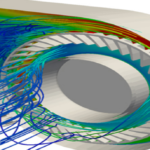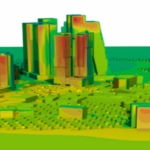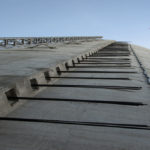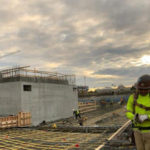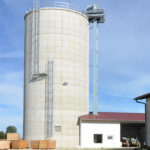Blog
Methods Used In Earthquake Performance Analysis

Earthquake performance analysis is a comprehensive and detailed engineering study carried out to determine how structures behave under earthquake loads and to ensure that they reach the targeted performance levels against these loads. In this process, there are data to be taken before analysis. First, the structure should be examined, determined, surveyed and tested. The current state of the structure is surveyed by determining in detail whether these methods are carried out in accordance with the project, material, and cross-sectional information. By examining the geometry structure and mechanical properties of the structure, it is necessary to decide on the required methods with the decision of expert engineers. Therefore, the essential data are obtained by using destructive and non-destructive methods in the existing structure. If we need to look at destructive and non-destructive methods,
Destructive Methods
Coring
The coring method allows cylindrical concrete samples taken from the reinforced concrete structural element to be tested in the laboratory area to see how much strength the concrete has. Due to this process, the sampling process is carried out using hand core or water core machines so as not to cause even minor damage to the structure, and the samples obtained are tested for the compressive strength of the structural element. The year in which the structure was built provides data on the current concrete strength of the structural component.
Concrete Stripping Method
The concrete stripping method allows the concrete and plaster layer on the reinforced concrete elements to be stripped and examined by measuring the diameter, spacing, and corrosion status of the reinforcement using mechanical equipment. The method is completed by recoating the stripped layer.
Non-Destructive Methods
X-ray Method
X-ray equipment is used to non-destructively determine the location, size, quantity and arrangement of reinforcements in structural elements inside the structure. The X-ray device provides information about the reinforcement without damaging the structural element and provides information about the reinforcement class and corrosion status by analyzing the images obtained.
Concrete Test Hammer
In the concrete test hammer method, by applying a certain impact to the concrete surface and measuring the rebound value, it provides information about the surface hardness of the concrete and the existing concrete strength and reinforcement. Schmidt hammer is a good approach to understand the distribution of concrete quality in the building.
Destructive and non-destructive methods used in earthquake performance analysis are essential to assess the current condition of structures and to increase the resistance of structural elements against earthquakes. While destructive methods provide precise results on concrete and reinforcement quality, non-destructive methods provide comprehensive information without damaging the structure. By using these methods together, the earthquake performance of structures is analyzed in the most accurate way, and the data obtained enables more accurate retrofitting methods to be selected.
Latest Blog
-
Why Are Reinforced Concrete Static Projects Important?
27 March 2025 -
Why Are Steel Static Projects Important?
21 March 2025 -
What is Acoustic CFD Analysis?
4 March 2025 -
Fire Analysis with CFD: Fire Safety and Simulation Technologies
25 February 2025 -
What Is A Static Project And Why Is It Important?
19 February 2025 -
Silo Static Project
29 July 2024 -
Methods Used In Earthquake Performance Analysis
4 July 2024 -
Reinforced Concrete Calculation Static Report
31 January 2024 -
Steel Calculation Static Report
31 January 2024 -
What Is CFD Analysis?
22 December 2023 -
What Are The Benefits Of CFD Analysis?
22 December 2023 -
Silo Reinforcement with Post-Tensioning Method
26 September 2023 -
Post Tensioning Method in Cantilever Slabs
4 September 2023 -
Post-Tensioning Application In Reinforced Concrete Silos
22 August 2023












